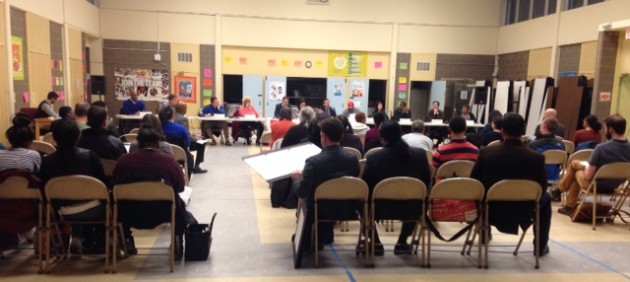Game theory and computer simulation take the risk out of teaching skills to soldiers, bankers and clerks.
By Alan King
Howard University News Service
The heavy winter coats are already out, but when it’s time to change the layout in The Children’s Place store in Hyattsville, Md., Jenenia Knight won’t have to rely only on her imagination to know how to arrange the lighter spring jackets.
Before her first day on the job in the store, Knight had seen how the child-friendly floor plan changes from season to season. The variations had been revealed in a computer simulated training program The Children’s Place launched in August for new employees in its 880 stores.
The software Knight trained on was designed by Root Learning, a collective of artists, scientist, educators– “the left brain and right brain”-whose clients range from General Motors to SunTrust bank to Taco Bell.
The idea of using simulations and game theory to teach dates back to the 1940s when mathematical modeling of complex situations became possible, Tim Blackman of the University of Western Ontario wrote in an email interview. The advent of high-speed digital computing in the early 1960s and private and public sector enthusiasm for understanding and simulating complex environments have made game theory and system simulation indispensable tools, according to Blackman.
”Game theory and simulation were relatively new [just after World War II], the idea that complex simulated modeling might help the real world seemed surreal to many people,” said Blackman, who also is a guest faculty member at the Massachusetts Institute of Technology. “Now it’s hard to imagine large corporations of any kind-preparing a new venture, or reconsidering an old one, without employing many or all of the tools that come in the game theory package.”
Today, novice mortgage bankers can manage a business without taking a loss and seasoned generals can experiment with strategies for sending troops on dangerous missions without risking fatalities.
The School of Mortgage Banking a few blocks west of the White House incorporates computer simulation to teach people how economic forecasts, interest rates competition and other variables influence success in the real estate finance industry.
The school, an educational arm of the Mortgage Bankers Association, relies on a game called “Deep Pockets” created by Prisim Business War Games Inc., said Jeff Lefebvre, Prisim’s president.
The U.S. military, which uses game theory to train for leadership and cognitive thinking, has been working with the California-based Institute for Creative Technologies to create training tools for the war fighter.One program used by the military is a head-set virtual reality program.
With this program, “you’re given a mission to plant a listening device on a building. The training aspect of that-[is on] what you’re looking for in terms of potential enemies and how to move around in a hostile environment,” said Alan Macleod, a government relations principal at Whyte Hirschboeck Dudek Government Affairs which represents the Institute for Creative Technologies.



